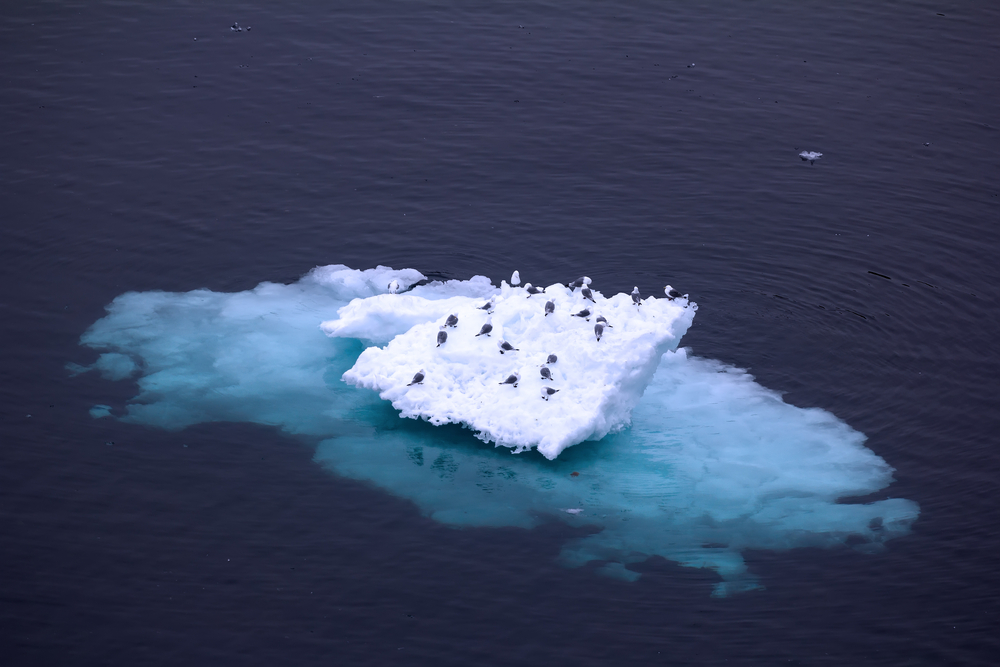Melting permafrost in Arctic will have $70tn climate impact – study
Study shows how destabilised natural systems will worsen man-made problem
The release of methane and carbon dioxide from thawing permafrost will accelerate global warming and add up to $70tn (£54tn) to the world’s climate bill, according to the most advanced study yet of the economic consequences of a melting Arctic.
If countries fail to improve on their Paris agreement commitments, this feedback mechanism, combined with a loss of heat-deflecting white ice, will cause a near 5% amplification of global warming and its associated costs, says the paper, which was published on Tuesday in Nature Communications.
The authors say their study is the first to calculate the economic impact of permafrost melt and reduced albedo – a measure of how much light that hits a surface is reflected without being absorbed – based on the most advanced computer models what is likely to happen in the Arctic as temperatures rise. It shows how destabilised natural systems will worsen the problem caused by man-made emissions, making it more difficult and expensive to solve.
They assessed known stocks of frozen organic matter in the ground up to 3 metres deep at multiple points across the Arctic. These were run through the world’s most advanced simulation software in the US and at the UK Met Office to predict how much gas will be released at different levels of warming. Even with supercomputers, the number crunching took weeks because the vast geography and complex climate interactions of the Arctic throw up multiple variables. The researchers then applied previous economic impact models to assess the likely costs.
Permafrost melt is the main concern. Greenhouse gases – which are released when o of rganic matter that had been frozen below the soil for centuries thaws and rots – have already begun to escape at the current level of 1 degrees Celsius of global heating. So far the impact is small. Ten gigatonnes of carbon have been released from the permafrost but this source of emissions will grow rapidly once temperatures rise beyond 1.5C.
On the current trajectory of at least 3C of warming by the end of the century, melting permafrost is expected to discharge up to 280 gigatonnes of carbon dioxide and 3 gigatonnes of methane, which has a climate effect that is 10 to 20 times stronger than CO2.
This would increase the global climate-driven impacts by by $70tn between now and 2300. This is 10 times higher than the projected benefits from a melting Arctic, such as easier navigation for ships and access to minerals, says the paper.
It would also add to global inequality because most of the economic burden – equivalent to almost the entire world’s current annual GDP – is likely to be borne by countries in warmer poorer regions such as India and Africa, which are most vulnerable to a rise in temperatures.
“It’s disheartening that we have this in front of us,” said Dmitry Yumashev of Lancaster University. “Even at 1.5C to 2C, there are impacts and costs due to thawing permafrost. But they are considerably lower for these scenarios compared to business as usual. We have the technology and policy instruments to limit the warming but we are not moving fast enough.”
The new projections contained a modicum of good news because the impact of land permafrost melt was at the lower range of what had been feared. Previous estimates suggested these Arctic tipping points could add more than 10% to climate costs. Some feared the methane alone could prove catastrophic but the new figures show CO2 remains the greatest concern.
“We still have a time bomb, but it may not be as large as previously believed,” said Yumashev. But he warned against complacency because even at the low end the damages are huge, the study has a considerable degree of uncertainty and the costs of several other potential tipping points have yet to be calculated.

